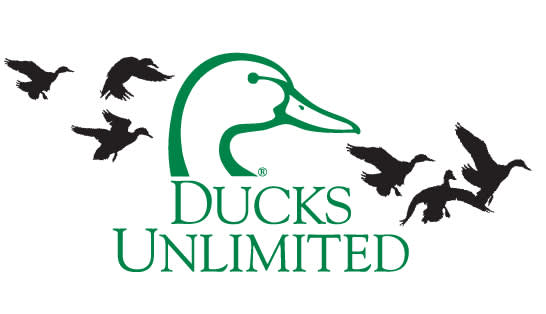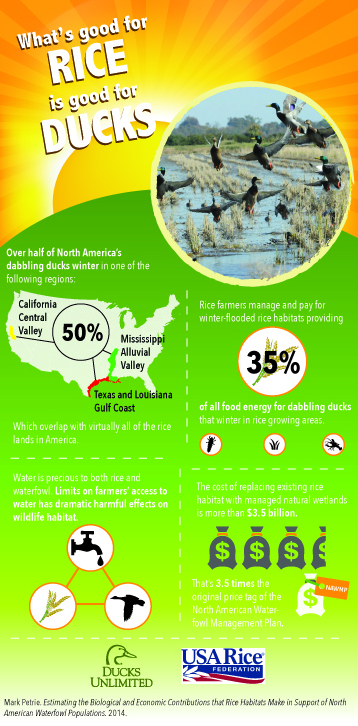Working Rice Lands Worth $3.5 Billion of Managed Wetland Habitat
Ducks Unlimited 05.06.14


There’s no doubt that rice, waterfowl and wetland habitats work cohesively to form a perfect ecosystem, and a recently published report puts a monetary value on those existing rice lands. Authored by Ducks Unlimited scientists for The Rice Foundation, the study found that the cost of attempting to replace rice lands with natural wetland habitat would exceed $3.5 billion.
“I’ve been in the rice business for more than three decades, and know firsthand that rice agriculture is a multifunctional agro-ecosystem,” said DU President George Dunklin. “In addition to nutritious food for people, rice lands provide critical habitat for waterfowl and countless other migratory birds and wetland-dependent species.”
All three rice-growing regions of the United States – the Mississippi Alluvial Valley (MAV), Gulf Coast and California’s Central Valley– overlap directly with the continent’s most important waterfowl wintering grounds.
“Rice production and farming are important components to ensuring we meet the population goals set forth in the North American Waterfowl Management Plan,” said DU CEO Dale Hall. “This study is an excellent tool we can utilize to show policymakers and waterfowl managers just how critical rice lands are to waterfowl populations.”
According to the study, more than 40 percent of the food resources available to wintering dabbling ducks along the Central Valley and Gulf Coast derive from flooded rice fields. The values for geese are higher because of dry-land feeding.
“The importance of a strong, viable rice industry goes well beyond the family farmers, rice mills and merchants, to national conservation efforts,” said USA Rice Federation President and CEO Betsy Ward. “What’s good for rice, is good for ducks.”
Unfortunately for waterfowl and rice farmers alike, all three regions face challenges as it relates to keeping rice on the land. Water supplies for rice production are under increasing pressure in all areas, and many producers may be forced to adopt practices that provide far fewer benefits for waterfowl.
Long-term declines in rice acreage on the Gulf Coast are especially worrisome with the simultaneous dramatic loss of coastal prairie and marsh habitats. Halting this decline and flooding a greater percentage of rice acreage will be necessary to meet the needs of Gulf Coast waterfowl in the future.
“We applaud the many rice producers who integrate extra conservation measures into their rice production to maintain water quality and provide much-needed waterfowl habitat,” said Jason Weller, Chief of the USDA Natural Resources Conservation Service. “The partnership between DU, USA Rice and the U.S. Department of Agriculture offers increased technical and financial assistance to help producers accomplish these goals on their land.”
Because of the significance of rice lands for waterfowl habitat, the two groups formed the USA Rice-DU Stewardship Partnership in 2013 to advocate for sound agriculture- and conservation-related policies and to promote the important ecosystem benefits of rice agriculture.

